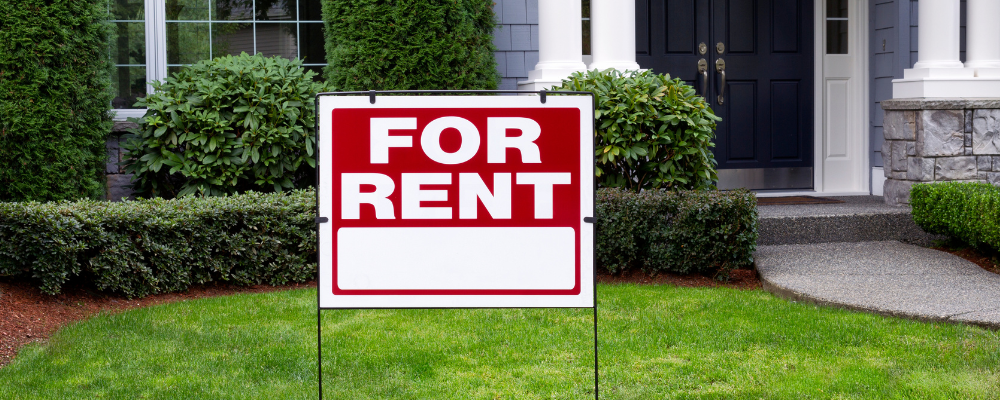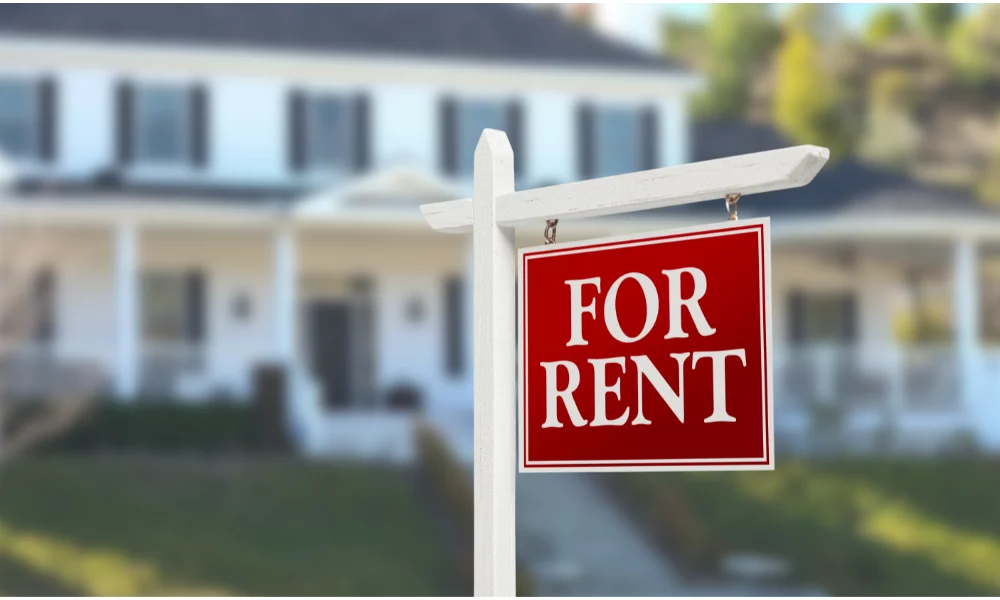Quick Summary
Rental property loans are aimed at helping real estate investors purchase rental properties and pay them off over a longer period of time. As such, they are typically 30-year amortized loans with fixed monthly repayment amounts. Investment property loans are also available from banks, hard money lenders and others, for fix and flip projects, construction, cash-out refinance, and bridge loans.
Table of Contents
Making money through rental properties from rental income is a successful real estate investing strategy chosen by many investors. Most investors will need to take a rental property loan, to be able to purchase the property. There are various investment property loans to choose from, so it’s important to know how each loan works and what the requirements are, before making a final decision.
What is a rental property loan?

Let’s start by looking at what rental property loans are. Rental property loans are long-term loans aimed at helping investors to purchase rental properties and slowly pay them back over time. Rental property loans are usually 30-year amortized loans, which means that the monthly payments are the same every month with no increases or decreases. This makes it easier for investors to budget and work out their cash flow on the property with the rental income that they will receive.
Investment property loans are, by nature, riskier for lenders, so interest rates are generally higher on rental property loans. Down payments on these loans may also be larger than they would be on a regular owner-occupied home mortgage. This isn’t all bad, as the bigger down payment can benefit investors overall by creating a lower Loan-To-Value (LTV) ratio, and even improve cash flow.
Rental property loan requirements
Rental property loans have different requirements, depending on the lender. However, there are a few requirements that can be found across the board. These include high interest rates, which can be anywhere from 7% upwards and large down payments of 25% or more.
Lenders are often looking to see that borrowers have enough money to cover 6 months of the loan repayments, which is to make sure that borrowers won’t default on their loan, even if there are unforeseen circumstances. Usually, rental property loans can be used for single-family and small multi-family homes, as well as condos and townhomes.
Most lenders will require a credit score of at least 620 or above, and a Debt-To-Income (DTI) ratio of less than 36%. Many lenders will charge higher fees on rental property loans to compensate for the risk, and private mortgage insurance isn’t needed the LTV is less than 80%.
Proof of rental income will be required in the form of current leases, or investors can provide estimations of rental income, in order to qualify for rental property loans. A history of property management may also be needed, but this varies from lender to lender.
Rental Property Loan Requirements
| Interest rate | 7% and up |
| Down payment | Between 20% and 25% |
| Savings | To cover 6 months of loan repayments |
| Credit score | 620 or higher |
| Debt-To-Income ratio | Less than 36% |
| Proof of rental income | Current lease or estimations |
Investment property loan rates

Buying a primary residence and buying an investment property are two different processes, which means that the requirements for each aren’t the same. Investment properties typically come with higher risk for lenders which leads to higher rates than traditional mortgages. The requirements for loans on investment properties are also usually more strict than a regular home loan.
The rates on loans for investment properties depend on a few factors:
- Location
- Property purchase price
- Loan type
- Down payment
Investment property loan rates can be anywhere between 50 to 87.5 basis points higher than traditional loan rates on a primary residence. For example, if a mortgage on a 30-year loan for a primary residence is about 3.25%, a 30-year amortized rental property loan could have a rate of 3.75% to 4.125%.
Lenders need to combat the increased risk that they face with loans for investment properties and the best way for them to do this is with higher loan rates, larger down payments and more stringent lending criteria.
The different types of investment property loans

Financing an investment property is the first step on the journey towards generating profits from real estate. It’s important to know which loan type suits your purpose, so we’ve done a quick look at each loan type.
30-Year Rental Loans
For investors who want to make a longer-term real estate investment to earn a steady rental income, then 30-year rental loans are a good solution. 30-year amortized rental loans are aimed at investors buying rental properties. These loans cover the purchase of the property and offer fixed monthly repayments for the duration of the loan.
Rental loans may have higher interest rates and require a larger down payment than traditional mortgages. However, for investors the interest payments can be deducted from tax, which means a saving in the long run.
The different types of rental property loans include:
- Conventional loans: These are traditional mortgages offered by banks or credit unions with lower interest rates and down payment requirements of less than 25%.
- FHA loans: The Federal Housing Administration backs these loans which are offered by traditional lenders and mortgage brokers. Both the down payments and credit scores for these loans are typically lower than a traditional loan.
- VA loans: Veterans Affairs loans are multifamily loans offered by credit unions, mortgage brokers and banks. These are available to veterans, active-duty service members and any spouses who fit the criteria.
- Blanket loans: These loans are suited to those who are purchasing several rental properties. They can all be financed under 1 loan, and this loan can be customized to each borrower.
- Portfolio loans: A lender offers portfolio loans for multiple single-family or small multifamily properties. While each property has its’ own loan, there is a group discount offered for this.
- HELOC and home equity loan: For borrowers who already have home equity, they can tap into this and use the revolving line of credit to cover the down payment on a rental property, or a home equity loan to finance the purchase price.
- Private money loans: These are offered by private lenders, and the rates and loan terms vary depending on the lender. A borrower’s credit score may not need to be very high for these loans.
Fix-&-Flip Loans
Investors who are looking for a property that is below market value to purchase, renovate and then resell for a profit. Fix and flip loans will typically cover both the purchase of the property, and the renovations that need to be done. These are short-term loans, designed to last the duration of the flip, so loan terms are usually 12 months.
Fix and flip loans use the property itself as collateral and are often offered by hard money lenders. They have less stringent qualification criteria, so they’re easier to get approved for, compared to regular mortgages. Lenders will factor in your income, credit score and how profitable the property is likely to be. Fix and flip loans largely depend on the potential success of the deal itself, as opposed to the borrower’s personal finances.
Bear in mind that fix and flip loans have higher interest rates than many loans, with rates ranging from 6% up to 12%. Having said that, they often require interest-only payments for a few months, until the principal amount needs to be paid back.
Construction Loans
Construction loans are short-term loans with higher interest rates that provide funding for building residential property. Once they have qualified for a construction loan, a borrower will be able to draw funds from the loan at each phase of the project. While construction is underway, the repayments will be interest-only.
The construction project is assessed at each phase by a professional appraiser or inspector, who will then give the go ahead for more funds to be released to the borrower. Once the project is complete, the borrower will usually switch the loan to a mortgage and start repaying the interest and the principal loan amount.
There are no fixed interest rates for construction loans, as rates vary according to the prime rate. There is a bigger risk on construction loans as there is no property to use as collateral, so rates are usually between 5% and 10%.
Cash-Out Refinance Loans
Those who have already built up home equity can tap into this using a cash-out refinance loan for their investment property. Borrowers can take a larger mortgage, and use the equity they have already amassed, to get the difference of the 2 amounts in cash. In other words, borrowers won’t have an extra loan repayment each month.
The cash that you receive from a refinance can be used for anything you need, whether it’s for a down payment on an investment property or for a remodel. Cash-out refinance loans offer lower interest rates than credit cards and other loans.
The cash amount that is paid out depends on the value of your home, but usually about 80% of a home’s value can be taken out. This option allows borrowers to free up money to invest and capitalize on lower interest rates.
Bridge Loans
A bridge loan is a short-term loan that investors can use to get funding in the interim period until they get more permanent financing. Bridge loans usually run for 6 to 12 months, and investors often use these to help finance the purchase of a new investment property until they have secured a more permanent loan by settling the down payment initially.
Bridge loans usually have higher interest rates than conventional loans, and this is often around 2% above prime. There are closing costs, origination fees and sometimes appraisal fees for bridge loans, so they aren’t the cheapest loan option.
How to get a rental property loan

Qualifying for a rental property loan is more stringent than some of the other loans for investment properties as this is an investment property purchase with some risk. Here are some tips for those who want to get a rental property loan to purchase a property and earn monthly rental income.
- Make sure your credit score is higher than 620. Most lenders won’t take a credit score any lower than this. Those who have a credit score of 740 or higher will get better rates and terms.
- Have a down payment of at least 20%. A 25% down payment is necessary in many cases, so make sure to have the funds available so that you can avoid paying private mortgage insurance, which is necessary for any down payments less than 20% usually.
- Get a DTI ratio of 36% or more. DTI is the percentage of your gross income that will be used towards paying off debt (in other words the loan). A DTI that is over 36% is usually preferable for lenders as this is a lower risk.
- Save up. Along with displaying enough income to cover your debt, lenders will require a certain amount of money to be in your bank account, to cover any months where you may run into financial trouble. So, it’s important to save up 3 to 6 months of the mortgage repayments, interest, insurance and taxes.
FAQ
Yes, US banks offer various investment property loans for different investing purposes. From a cash-out refinance loan to a rental property mortgage, banks have options for real estate investors who need financing for their deals.
As a general rule of thumb, most investment property loans require a down payment of between 20% and 25% of the purchase price. The lowest down payment that is required for investment property loans is typically 20% from traditional lenders. Putting down less than this can be complicated because the risk for lenders will be higher, so this will need to be mitigated another way.

